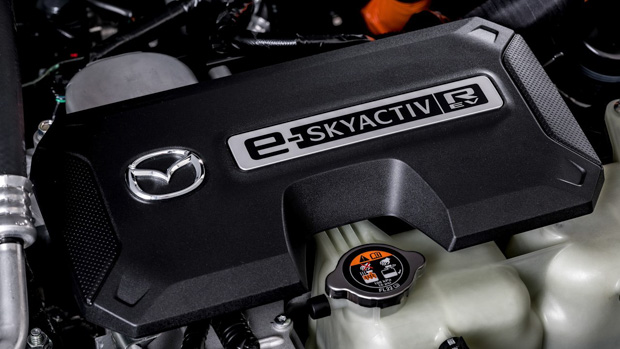-
Car Reviews
- Car News
-
Car Comparisons
Latest comparisons
- Chasing Deals
Mazda’s rotary-powered MX-30 has finally made its debut boasting over 600km of range from its plug-in hybrid drivetrain
At long last, Mazda has revived its rotary engine technology with the unveiling of the MX-30 R-EV model in Europe, and it’s a shoo-in for Australia
The MX-30 launched in Australia with two variants in 2021; one fitted with a more traditional four-cylinder 24-volt ‘mild hybrid’ and the other featuring a fully electric drivetrain which was widely panned for its limited 200km driving range from its 35.5kWh battery.
Mazda’s new drivetrain option uses a plug-in hybrid setup, similar to the upcoming CX-60, but differentiates itself by using its combustion engine purely as a range extender like its rival the Nissan Qashqai e-Power.
This means that although the battery has shrunk to 17.8kWh this system provides 85km of range (WLTP), before the rotary kicks in to provide a total driving distance of over 600km while drawing from a 50-litre tank.
Mazda says the battery can be recharged in around 50 minutes using a home-style 11kW AC charger or as little as 25 minutes when using a DC charger at a rate of 36kW.
Regardless of the form it takes, many Australian fans will be excited at the prospect of a new rotary-powered vehicle from Mazda, the first since the RX-8 was discontinued in 2012.
Back in early 2022, Mazda Australia told Chasing Cars it was keen to bring the rotary-powered MX-30 to Australia if the business case stacked up.
However, when speaking with Mazda Australia public relations specialist Alex Fisk on Monday, Chasing Cars was told its focus was currently concentrated on the launch of its new premium line-up of vehicles – though the model wasn’t ruled out either.
“We’re not saying it’s off the cards, there is still that interest there [for in the MX-30 R-EV]”, he said.
“Globally, Mazda introduces models and powertrains to markets based on a multi-solution strategy that considers regional differences in energy production, environmental regulations, and customer needs,” he said.
“In Australia, this year we’re focused on launching our new large platform hybrid modes in Mazda CX-60 and Mazda CX-90, plus a range of updates across key model lines, including Mazda CX-8 and Mazda 6.”
Although Mazda doesn’t provide an official fuel economy figure, using these numbers we can estimate that the rotary uses roughly 10-11.5L/100km of fuel.
The engine uses a single rotor engine with 830cc of capacity, the unit itself produces 55kW/116Nm of power and torque which generates electricity for the 122kW/260Nm front motor.
Mazda’s assistant manager of Mazda’s powertrain development Yoshiaki Noguchi told Autocar that the new unit was direct injected instead of port injected like the twin-rotor RX-8 while also being 15kg lighter thanks to the extensive use of aluminium.
Noguchi said fuel efficiency still remained the greatest challenge for the rotary engine but noted that there had been improvements made to fix the often infamous reliability woes of the previous generation rotary engines.
“For reliability, we increased the compression ratio to 11.9. This is a very high number for rotary that is generally lower,” he said.
“We have changed the thickness of the apex seal, which also makes it more reliable. For reliability, this makes a big contribution. In addition, we have a new coating on the apex seal.”
Latest news
About Chasing cars
Chasing Cars reviews are 100% independent.
Because we are powered by Budget Direct Insurance, we don’t receive advertising or sales revenue from car manufacturers.
We’re truly independent – giving you Australia’s best car reviews.




